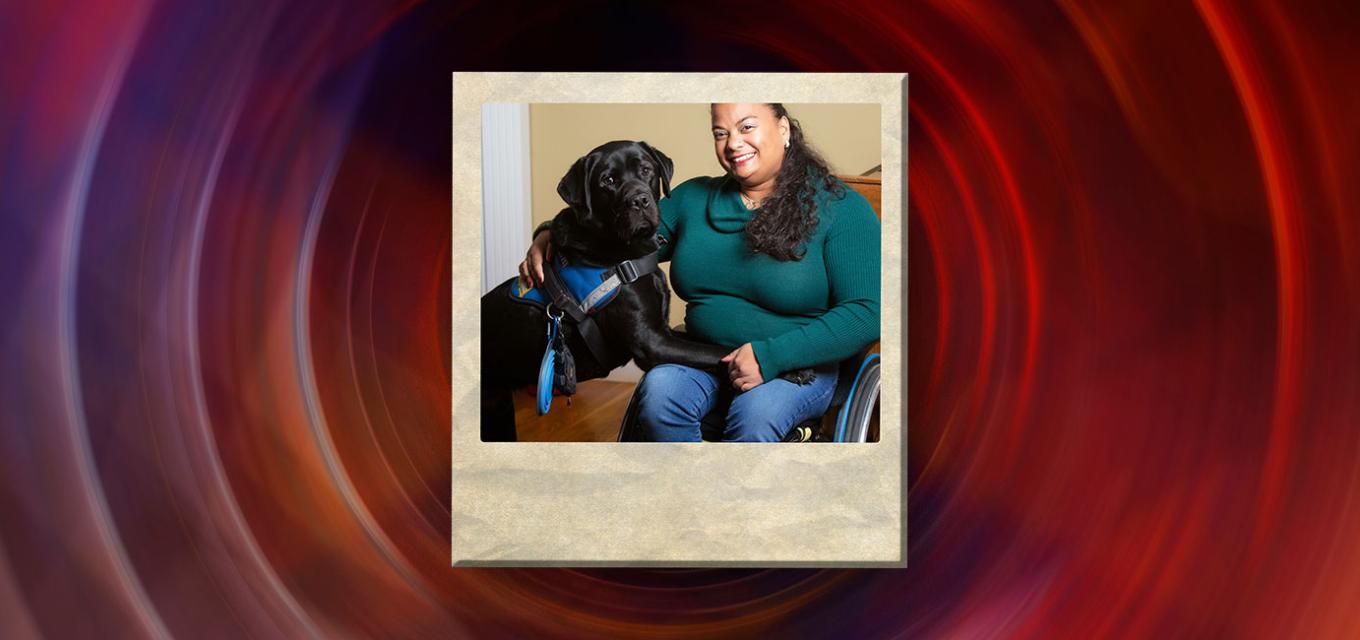2024 Winter

Intersections: exposing and closing disability research gaps
How the Institute on Community Integration is helping to overcome these disparities.
While still a teenager, Anjali Forber-Pratt filed a lawsuit against her school district, alleging it failed to provide accessibility features. Among other alleged shortcomings, she was prevented from registering for an applied technology course that made use of a wind tunnel.
The case settled, but for Forber-Pratt, it was just the starting line.
“I was a wheelchair racer, and was intrigued by the experiments and the data that a wind tunnel could generate,” Forber-Pratt recalled in a meeting last fall at CEHD’s Institute on Community Integration (ICI). ICI’s Research and Training Center on Community Living brought together Forber-Pratt and other prominent disability activists and scholars within and outside the University of Minnesota to establish a research agenda addressing racial, ethnic, linguistic, cultural, and other disparities in the disability experience.
Forber-Pratt, who was born in Calcutta, India, and adopted by a U.S. family, shared that her experience was further complicated because she was not only a person with disabilities, but a person of color in a nearly all-white school.
“What I’ve learned throughout my life is that we can’t be afraid to talk about that, to dissect it, and study it,” she told the attendees. “The layers and systemic forces of oppression that I experienced are at the heart of what we mean by intersectional research.”
Forber-Pratt went on to become a Paralympic medalist, a disability advocate, and a principal investigator at Vanderbilt University before being named the current director of the National Institute on Disability, Independent Living, and Rehabilitation Research (NIDILRR).
“Conducting research in partnership with people with disabilities is a high priority of hers, and in addition to leading an important funding agency, she deeply understands intersectionality,” says AmyHewitt, ICI’s director, who has focused the organization’s research agenda squarely around principles of diversity, equity, and inclusion in the context of intellectual and developmental disabilities (IDD).
ICI’s 2022 “State of the Science: Engaging Persons with IDD from Underserved Racial, Ethnic, Linguistic, and Cultural Groups in Research” meeting included Forber-Pratt, Georgetown University’s Tawara Goode, other scholars, and people with intellectual, developmental, and other disabilities and their families. Participants then began collaborating on an issue of the journal Intellectual and Developmental Disabilities, to be published this spring.

Articles will examine gaps in disability research focused on living arrangements, employment matters, social relationships, the direct support workforce, and other aspects of community living and explore ways to engage minoritized groups in every phase of research.
A few examples: What are the strengths and support needs across the lifespan of families from historically marginalized groups who have a member with disabilities? How can they more effectively access available services? How can we support people with disabilities who are crime victims in a culturally and linguistically appropriate way?
Hewitt also challenged ICI’s principal investigators to embed DEI-linked investigative questions and partnerships with people with IDD in every research proposal.
“Having a disability and being from a racial, ethnic, linguistic, or cultural background that has historically been marginalized steers you to the largest disparities and equity issues that exist,”Hewitt says. “But, when you hear about diversity, equity, and inclusion, disability is far too often left out.”
Even within the disability research community, there are barriers. People with disabilities who use communication devices, or speak languages other than English, are deaf, or have mental health needs, are routinely left out of studies, says Goode, a longtime ICI collaborator who leads Georgetown’s National Center for Cultural Competence.
“The greater your support need, the more likely it is you’ll be left out and the message is, ‘you’re not even worthy of being studied,’” Hewitt says. The over-sampling required to include racially, linguistically, ethnically, and culturally diverse perspectives in a disability study is another barrier, as is the general difficulty in winning approvals from institutional review boards.
“The disability service system was conceptualized and developed by mid- dle-class white people, so what is available to people with disabilities from diverse backgrounds may or may not be what they want or need,” Hewitt says.
She urged researchers to consider Goode’s cultural framework when evaluating public disability services. This includes assessing whether services are not only available and being used, but are truly accessible, acceptable, and of high quality for users from culturally and linguistically diverse backgrounds.
“Understanding the complexity within the context of the multiple dimensions of culture is so very important in the conduct of research,” Goode says.
“We haven’t figured out how to make disability services nimble and responsive enough to meet people’s needs, and yet we continue to wonder why white people utilize them in disproportionate numbers,” Hewitt says.
Last spring, Hewitt was invited to a White House “Communities in Action: Building a Better Minnesota” event. Itleft her optimistic, particularly in light of President Biden’s executive order calling for addressing equity and inclusion, which resulted in requests for research proposals requiring that differences in race, ethnicity, linguistic, and cultural backgrounds be explicitly explored.
“That order has already changed behavior,” Hewitt says. “It will influence researchers, and our documented proceedings and literature reviews around the importance of doing this work will hopefully matter, too.”
Photo credit(s): Institute on Community Integration
-JANET STEWART